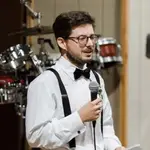On October 13, 1972, Uruguayan Air Force Flight 571 crashed in Argentina's Andes Mountains — and the survivors were forced to turn to cannibalism while awaiting rescue.
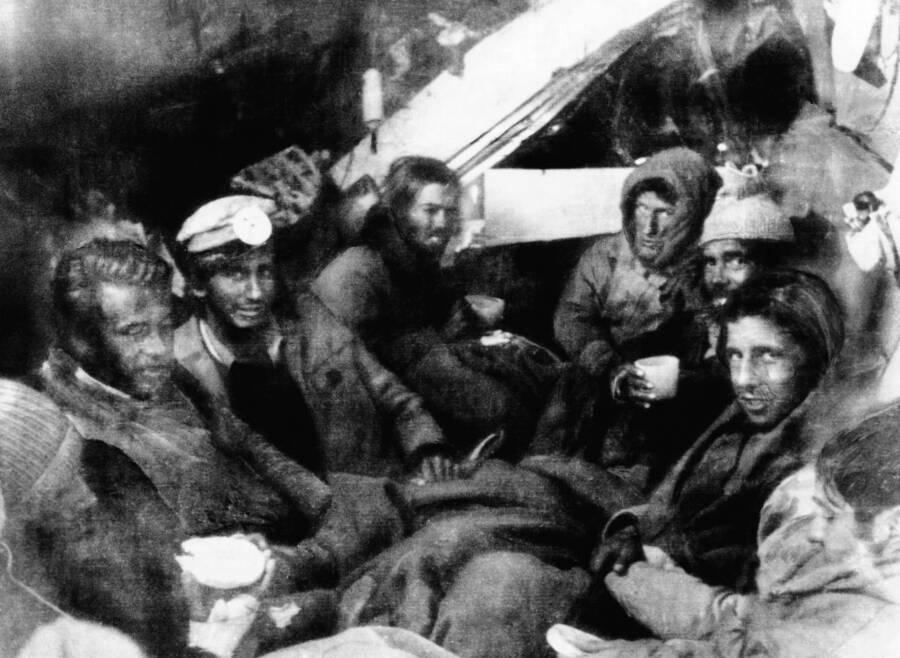
Everett Collection Historical / Alamy Stock PhotoThe survivors of Uruguayan Air Force Flight 571 shortly after rescuers discovered them.
On Oct. 13, 1972, Uruguayan Air Force Flight 571 crashed in the Andes Mountains. Forty-five people were on board when the plane went down, but by the time they were rescued more than two months later, only 16 were still alive. However, the most horrifying part of their story was just how far they were willing to go in order to make it through.
Shortly after the survivors were rescued, it was revealed that they had been forced to resort to cannibalism to avoid dying of starvation.
When the public learned of these grisly circumstances, the backlash was immediate and intense — but it faded quickly once the men said their actions had been inspired by the Last Supper, when Jesus gave his disciples bread and wine made from his very own body. A priest also determined that the survivors had only acted out of necessity and absolved them of any related sin.
The tragedy was later chronicled by one survivor, Nando Parrado, in his memoir Miracle in the Andes and in the 1993 Ethan Hawke film Alive.
This is the story of the survivors of Uruguayan Air Force Flight 571.
The Passengers Of Uruguayan Air Force Flight 571
The group of people at the center of the tragic, ill-fated plane crash in the Andes included an amateur rugby team — the Old Christians Club, which hails from the Carrasco neighborhood of Montevideo, Uruguay — their friends and families, and, of course, the plane’s crew.
The Old Christians were on their way to Santiago, Chile, for a match, departing from Carrasco International Airport on Oct. 12, 1972. In total, the twin-engined Fairchild turboprop was carrying five crew members and 40 passengers.
Among those passengers were Nando Parrado and Roberto Canessa, two members of the rugby team who would ultimately step up to lead a search party to the crash site.
Poor weather conditions in the Andes forced the plane to touch down before it arrived in Chile, however. The passengers spent a single night in Mendoza, Argentina, before departing once again the following day just after 2 p.m.
Knowing that their small plane could not fly at a high enough altitude to clear the Andes Mountains, the pilots decided to go south through the Pass of Planchón.
An hour into the flight, one pilot informed air traffic controllers that they had gone over the pass and were ready to land. Unfortunately, they were wrong — and their mistake would prove to be fatal.
Air Force Flight 571 Crashes Into The Andes
Not realizing that the plane was still in the Andes, air traffic controllers gave the pilots clearance to begin their descent and prepare for landing. And because of poor weather conditions causing low visibility, the pilots were unable to see the mountains they were descending directly into.
The belly of the plane soon clipped a peak, and the aircraft lost its right wing. Shortly after, the left wing was gone as well, and the plane’s fuselage crashed down into the snow-covered Andes.
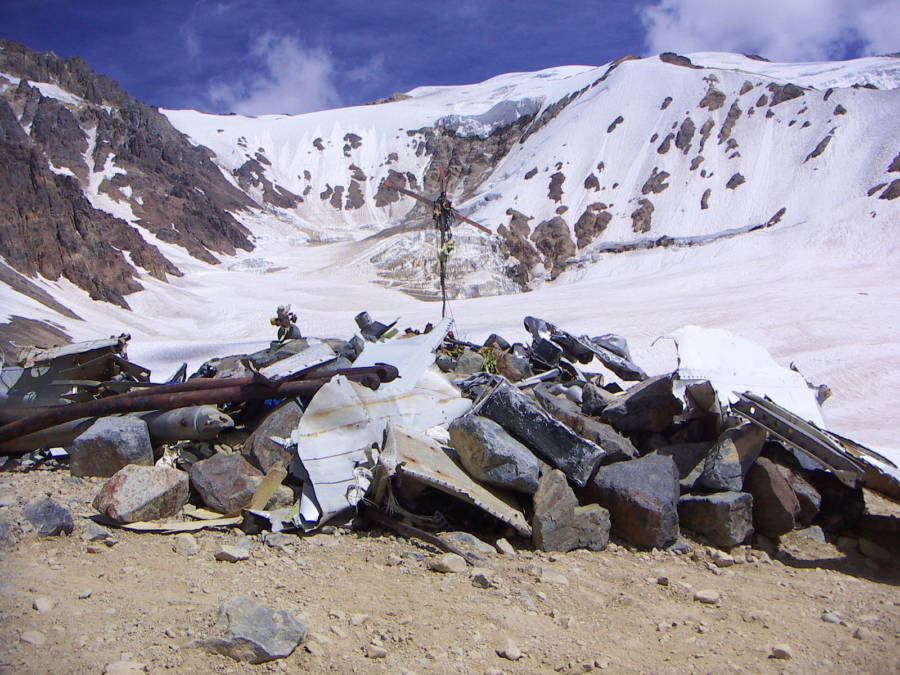
Wikimedia CommonsThe crash site of Uruguayan Air Force Flight 571.
“I felt the pain in every cell of my body, and as I shivered spastically in its grip, each moment seemed to last an eternity,” Nando Parrado recalled in Miracle in the Andes.
“Clots of dried blood were matted in my hair, and three bloody wounds formed a jagged triangle about four inches above my right ear. I felt rough ridges of broken bone beneath the congealed blood, and when I pressed down lightly I felt a spongy sense of give. My stomach heaved as I realized what this meant — I was pressing shattered pieces of my skull against the surface of my brain.”
Parrado came to in immense pain under harrowing circumstances, but he had fared better than some of the others. In the initial crash, 12 people were killed. Thirty-three of them were still alive, but some were even more injured than Parrado.
Canessa, described by Parrado as “strong-willed and intense,” informed him that he had been unconscious for three days by that point.
It would be another 10 weeks before the survivors were found. But the most difficult part of their story was just beginning.
The Survivors Resort To Cannibalism
The passengers’ supplies were meager. They were 11,500 feet above sea level, they were facing freezing temperatures, and they had little more than wine and candy bars to sustain themselves. Parrado hadn’t even packed clothes for cold weather.
Canessa and one other survivor had medical training and attempted to tend to the wounded, but without the proper instruments, there was only so much they could do.
A search had been launched for the missing plane, but due to the incorrectly reported location that led to the crash in the first place, search teams had no clue where to look. The plane’s white paint didn’t make it any easier to find it in the snow-covered mountains.
The search was called off after just 10 days.
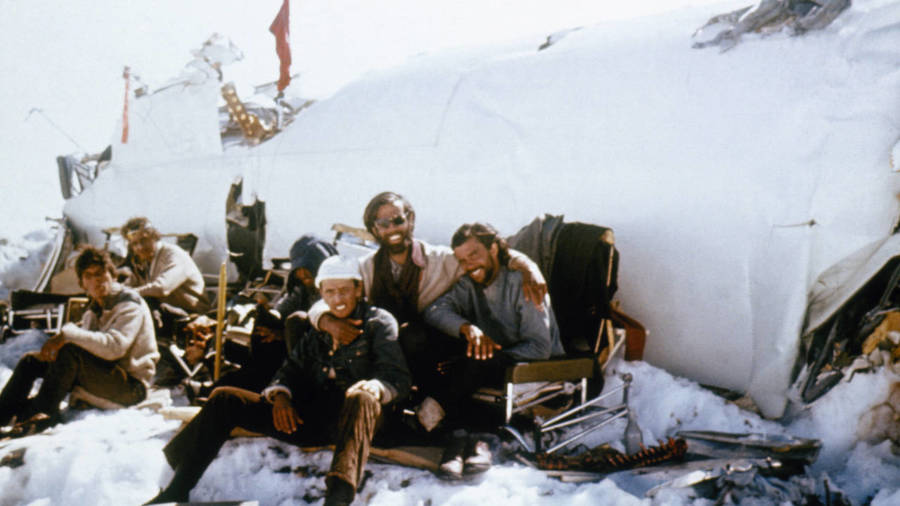
YouTubeSurvivors of the Andes plane crash.
The plane’s fuselage was still intact, but it did little to provide them shelter or protection. Within a week, most of the food was gone, and soon the wounded began to die off. Six died in the first two weeks after the crash — and eight more followed them to the grave on Oct. 29, when an avalanche buried the fuselage.
With the death toll rising and supplies all but depleted, the passengers came to a harsh realization: they would have to eat the dead in order to survive.
“We shook our hands and we say, ‘If I die, please use my body. So at least you can get out of here. And tell my family how much I love them,'” Parrado told ABC News in 2023.
The survivors likened this decision to a communion, citing the biblical Last Supper, during which Jesus shared bread and wine made from his own body with his disciples.
“It’s a very, very humiliating thing to eat a dead body,” Canessa said. “I thought of my mother that I had unique chance of telling her not to cry anymore, that I was alive. And to do that, I had to buy time, and to buy time, I had to eat the dead bodies.”
By Dec. 12, just 16 of the original 45 passengers were still alive, and the decision was made to send three of them down the mountain to look for help. The chosen “expeditionaries” were Nando Parrado, Roberto Canessa, and Antonio Vizintín.
Sixty-one days after their plane crashed in the mountains, the men set off on what they thought would be a one-day journey.
Nando Parrado And Roberto Canessa’s Journey Down The Mountain
Three days after they set out, the expeditionaries reached the top of the mountain — and realized all that surrounded them was more of the same.
It was decided then that Vizintín would return to the crash site to inform the others that the journey would take longer than expected. He left his remaining rations with Parrado and Canessa and set off back the way they had come.
Parrado and Canessa, meanwhile, continued on their path, which proved to be more dangerous on the way down. Eventually, after eight days, they came upon a river bank and a cattle trail that led them to the village of Los Maitenes, Chile.
Across the roaring river, Parrado and Canessa could see three farmers, but the noise made it effectively impossible to communicate. One of the men, Sergio Catalán, indicated that they would return the next day.
“That dream tomorrow we always had, was real now,” Canessa said.
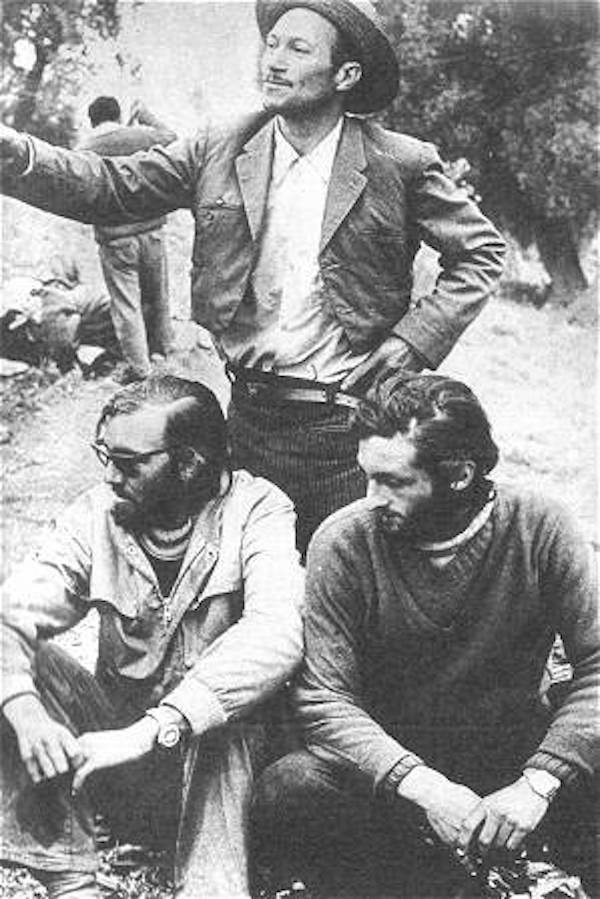
Wikimedia CommonsNando Parrado (left) and Roberto Canessa (right) shortly after their rescue.
When they returned early the next morning, they had devised a plan to communicate by writing notes on paper, tying them to rocks, and throwing them across the river.
Parrado’s initial note read: “I come from a plane that crashed in the mountains. I am Uruguayan. We have been walking for 10 days. I have 14 friends wounded on the crash site. We need help. We don’t have any food. Please come and get us.”
Catalán immediately went for help, riding 10 hours on horseback to inform the authorities — and in the following days, the other 14 survivors were rescued by helicopter.
In the ensuing media frenzy, word spread that the survivors had resorted to cannibalism, causing some to question the ethics of such an act. The survivors, for their part, addressed the backlash directly, and their comparison to the Last Supper seemed to calm some of the moral panic.
“Some thought it was good, some thought it was bad, but I couldn’t care less,” Canessa said. “They don’t have any kind of right to judge us.”
After learning about this harrowing tale of survival, check out these 11 incredible survival stories from people who cheated death. Or, read about the Donner Party, another stranded group forced to turn to cannibalism to survive.

